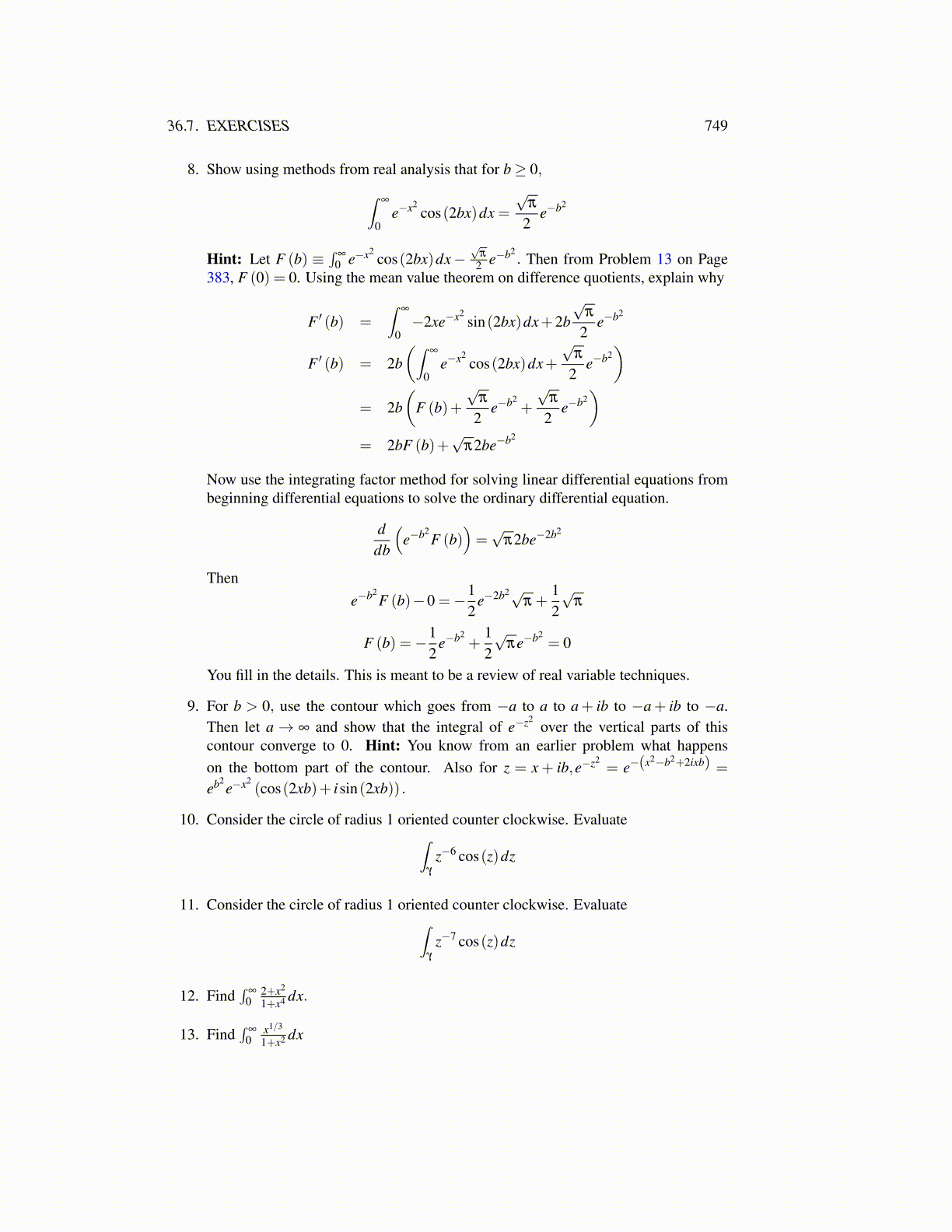
36.7. EXERCISES 749
8. Show using methods from real analysis that for b≥ 0,∫∞
0e−x2
cos(2bx)dx =√
π
2e−b2
Hint: Let F (b) ≡∫
∞
0 e−x2cos(2bx)dx−
√π
2 e−b2. Then from Problem 13 on Page
383, F (0) = 0. Using the mean value theorem on difference quotients, explain why
F ′ (b) =∫
∞
0−2xe−x2
sin(2bx)dx+2b√
π
2e−b2
F ′ (b) = 2b(∫
∞
0e−x2
cos(2bx)dx+√
π
2e−b2
)= 2b
(F (b)+
√π
2e−b2
+
√π
2e−b2
)= 2bF (b)+
√π2be−b2
Now use the integrating factor method for solving linear differential equations frombeginning differential equations to solve the ordinary differential equation.
ddb
(e−b2
F (b))=√
π2be−2b2
Thene−b2
F (b)−0 =−12
e−2b2√π +
12√
π
F (b) =−12
e−b2+
12√
πe−b2= 0
You fill in the details. This is meant to be a review of real variable techniques.
9. For b > 0, use the contour which goes from −a to a to a+ ib to −a+ ib to −a.Then let a→ ∞ and show that the integral of e−z2
over the vertical parts of thiscontour converge to 0. Hint: You know from an earlier problem what happenson the bottom part of the contour. Also for z = x + ib,e−z2
= e−(x2−b2+2ixb) =
eb2e−x2
(cos(2xb)+ isin(2xb)) .
10. Consider the circle of radius 1 oriented counter clockwise. Evaluate∫γ
z−6 cos(z)dz
11. Consider the circle of radius 1 oriented counter clockwise. Evaluate∫γ
z−7 cos(z)dz
12. Find∫
∞
02+x2
1+x4 dx.
13. Find∫
∞
0x1/3
1+x2 dx